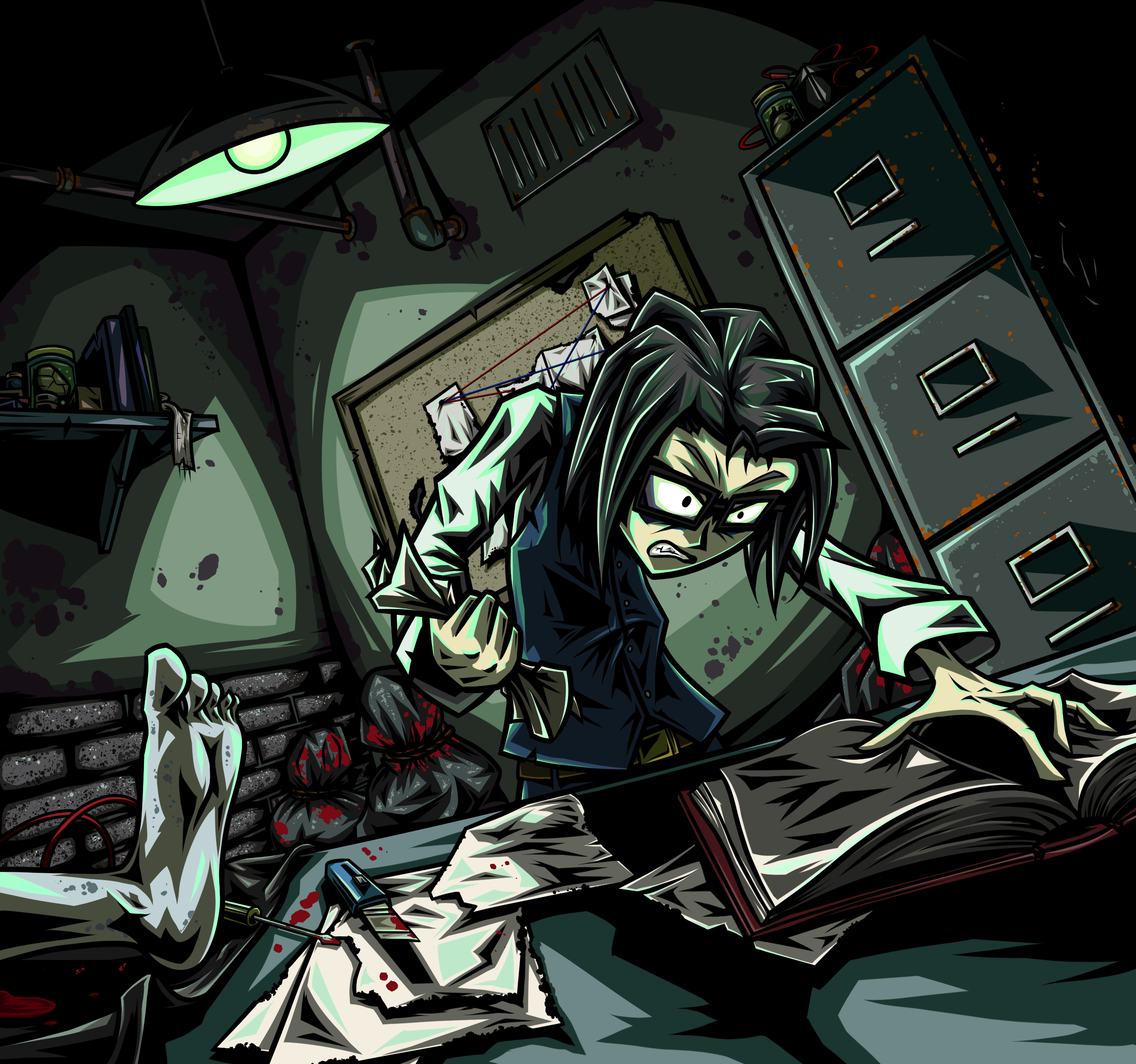
In the early 1920s, a man Godwin Piedmont sold the concept to the City of Lecton. A revolutionary step towards removing poverty while progressing industry. A place where orphans would be taken in, given a place to stay, food to eat, educated, and be taught the value of hard day’s work. In a time of booming industrial ideals, this concept was taken in with much veneration. Lecton City approved and in 1922 Piedmont Factory was built.
Despite what it was a sold as, even a skin deep assessment of Piedmont would’ve revealed that it was in truth a den to child slavery. A place so repugnant the term “sweat shop” would’ve be too good for it. But what was hidden beneath even that was an underworld of illegal trade. Underneath the factory floors, in its gigantic basements, Piedmont had distilleries that brewed prohibition liquor and labs that churned out opioids, including the recently banned heroin. The actual factory itself was just a front with its perceived production simply being a way to secretly ship its illegal ones. This was why Piedmont could tolerate the craftsmanship of untrained children and take the losses that would entail.
Publicly, Piedmont Factory was a resounding success. As far as the City of Lecton was concerned Godwin managed to take homeless waifs off the street and was making honest working class citizens out of them. Even when the Great Depression hit, Godwin was still coming across windfalls. The sudden downfall of society increased the demand for drugs and alcohol while chains of freshly broken families further filled his factories with small working hands. All this only sold the Godwin’s concept as a self-sufficient safeguard during dark times, raising its public popularity further.
Of course things did not last. When law enforcement began fiercely cracking down on the opioid epidemic, supply of raw materials became heavily restrictive. Piedmont’s legitimate business was essentially nonexistent and Godwin began to feel the squeeze. As he took more and more risks, he realized he was leaving a trail of evidence that was slowly leading the police to his factory’s walls. When his contacts warned him of an upcoming law stirring in congress that would restrict child labor; that was the last straw.
There is little hard evidence of what happened next but historians mostly agree that the implications are damning. Riding on the coattails of Piedmont's still perceived success, Godwin managed to take a substantial insurance policy on the factory and his children, for whom he was for all intents and purposes their legal guardian. A little over a month later would be Lecton’s greatest tragedy, the legendary Night of the Fire. Piedmont Factory, any evidence within it, and of course the lives of the 31 children trapped inside all went up in flames. Godwin himself made a public showing lamenting the tragedy and dedicating a memorial to the lives lost. Then he simply wiped his hands clean of the whole thing.
Such acts of blatant cruelty and greed have left scars deeper than anyone could’ve imagined for the heart of Piedmont Factory still beats with hate.
Despite what it was a sold as, even a skin deep assessment of Piedmont would’ve revealed that it was in truth a den to child slavery. A place so repugnant the term “sweat shop” would’ve be too good for it. But what was hidden beneath even that was an underworld of illegal trade. Underneath the factory floors, in its gigantic basements, Piedmont had distilleries that brewed prohibition liquor and labs that churned out opioids, including the recently banned heroin. The actual factory itself was just a front with its perceived production simply being a way to secretly ship its illegal ones. This was why Piedmont could tolerate the craftsmanship of untrained children and take the losses that would entail.
Publicly, Piedmont Factory was a resounding success. As far as the City of Lecton was concerned Godwin managed to take homeless waifs off the street and was making honest working class citizens out of them. Even when the Great Depression hit, Godwin was still coming across windfalls. The sudden downfall of society increased the demand for drugs and alcohol while chains of freshly broken families further filled his factories with small working hands. All this only sold the Godwin’s concept as a self-sufficient safeguard during dark times, raising its public popularity further.
Of course things did not last. When law enforcement began fiercely cracking down on the opioid epidemic, supply of raw materials became heavily restrictive. Piedmont’s legitimate business was essentially nonexistent and Godwin began to feel the squeeze. As he took more and more risks, he realized he was leaving a trail of evidence that was slowly leading the police to his factory’s walls. When his contacts warned him of an upcoming law stirring in congress that would restrict child labor; that was the last straw.
There is little hard evidence of what happened next but historians mostly agree that the implications are damning. Riding on the coattails of Piedmont's still perceived success, Godwin managed to take a substantial insurance policy on the factory and his children, for whom he was for all intents and purposes their legal guardian. A little over a month later would be Lecton’s greatest tragedy, the legendary Night of the Fire. Piedmont Factory, any evidence within it, and of course the lives of the 31 children trapped inside all went up in flames. Godwin himself made a public showing lamenting the tragedy and dedicating a memorial to the lives lost. Then he simply wiped his hands clean of the whole thing.
Such acts of blatant cruelty and greed have left scars deeper than anyone could’ve imagined for the heart of Piedmont Factory still beats with hate.
The History of Piedmont: The Beginning by @rollee (Rollee Bitterblossom)
This is the same story thats on the groups front page, I'm just submitting it as a journal for record purposes If you liked this story and found the Factory of Madness interesting I have a group where I store the art and stories. Here



So the factory was no good from the beginning, and it just got worse. I like how you've tied it into historical events, particularly the drug trade and Great Depression, and the logical decline of production to the point of committing heartless fraud seems like the kind of thing you could expect of Piedmont considering the facade he's already put up.